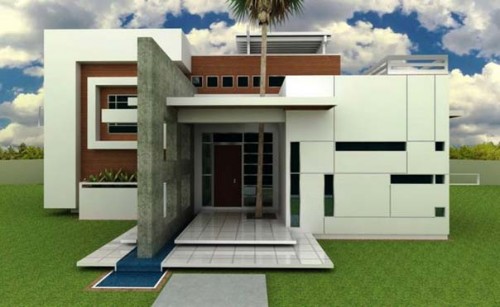

The groundwork for significant change was laid in the development of the Sullivanesque, Commercial, Bungalow and Prairie styles at the turn of the 20th century. Innovative American architects like Louis Sullivan and Frank Lloyd Wright had been moving toward a new theory of architecture as well. That same year an influential book entitled The International Style was published by architects Henry-Russell Hitchcock and Philip Johnson. In 1932 the first modern architectures exhibit in America was held at the Museum of Modern Art in New York City which brought these new ideas in architecture to the forefront. As Europe sunk into chaos just before WWII, many prominent architects emigrated to the US, bringing their new architectural concepts with them. In that same timeframe stateside, American architects continued to design more traditional style houses, yet experiment with new forms for skyscrapers and commercial buildings. In the period between the two world wars, European architects embraced this concept and designed not just commercial buildings, but houses in this bold, new form.

With brave new shapes and forms utilizing new construction technologies of the time, the International style was portrayed as a new kind of architecture designed solely to meet the needs of the common people in the Machine Age. Inspired by the Cubism of modern art in Europe, the boxy shapes of International style buildings embodied a new social theory of architecture as well. The International style with its starkly unornamented appearance of rectangular shapes, punctuated with bands of windows, announced a new "modern" view of the style and purpose of architecture. The impact of both the Art Deco and Art Moderne styles was soon eclipsed by the development of the International style, which left a lasting impression on the urban landscape especially. The smooth wall surface of the Art Deco style was carried over into the development of the more streamlined, less ornamented Art Moderne style. Embracing a sleek, sharp edged appearance with distinctive decorative details, the Art Deco style presented an exotic new look for buildings. The Art Deco style and subsequent Art Modern style were promoted at the 1925 Exposition des Arts Decoratifs in Paris.

European architects Eliel Saarinen, Le Corbusier, Walter Gropious and Mies van der Rohe emphasized radically new designs in the early in 20 th century, abandoning past building precedent and exploring new materials and technology in their work. The styles of the Modern Movement, Art Deco, Moderne and International, began in Europe and spread to the United States in the 1920s. The Modern Movement of architecture represents a dramatic shift in the design of buildings, away from the traditional forms and construction techniques of the past and toward a new era of design.


 0 kommentar(er)
0 kommentar(er)
